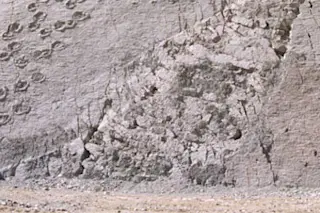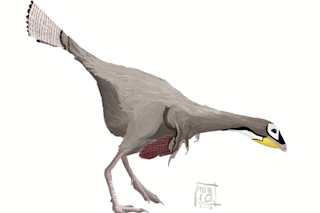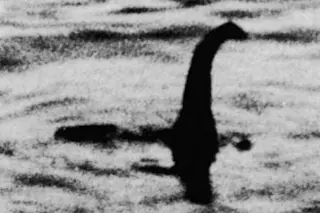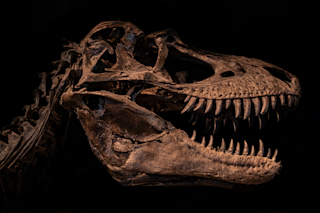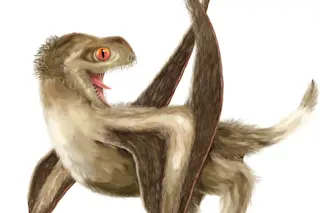Eighty-four-year-old Sheldon Johnson never imagined that once he began digging, it would be so difficult to stop. In February 2000, he climbed into his trackhoe and drove up to a 40-foot hill on his small farm in southern Utah. The rusty sandstone mound did not match the level of the adjacent new city road, and the retired optometrist simply wanted to level it. Johnson busily went to work hauling out 15-foot-long rectangular slabs of the red rock. Then the trackhoe flipped one of the slabs over, and Johnson saw them: pristinely preserved dinosaur footprints. “It was unmistakable. I could see knuckles, claws, scales, and three big toes. No one hardly believed me at first,” he says.
Johnson immediately began turning over more layers of sandstone, breathlessly checking their underbellies for tracks. To his delight, nearly every one had some of the monstrous prints. He called around to state offices and ...


